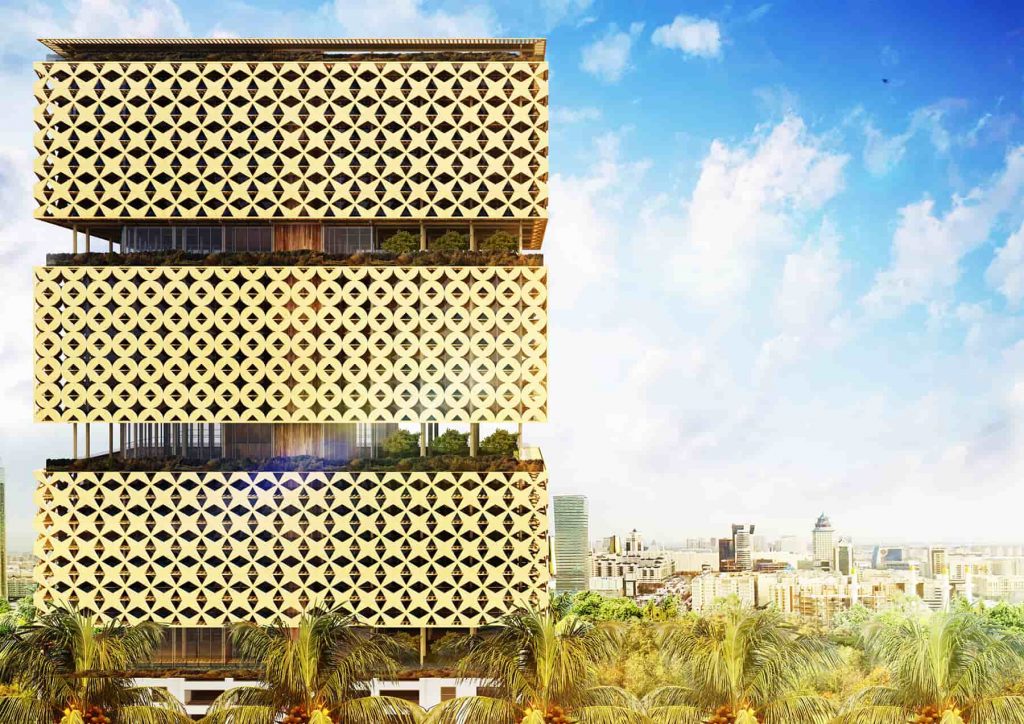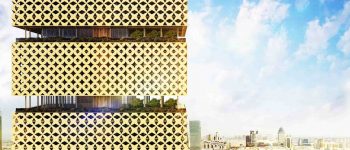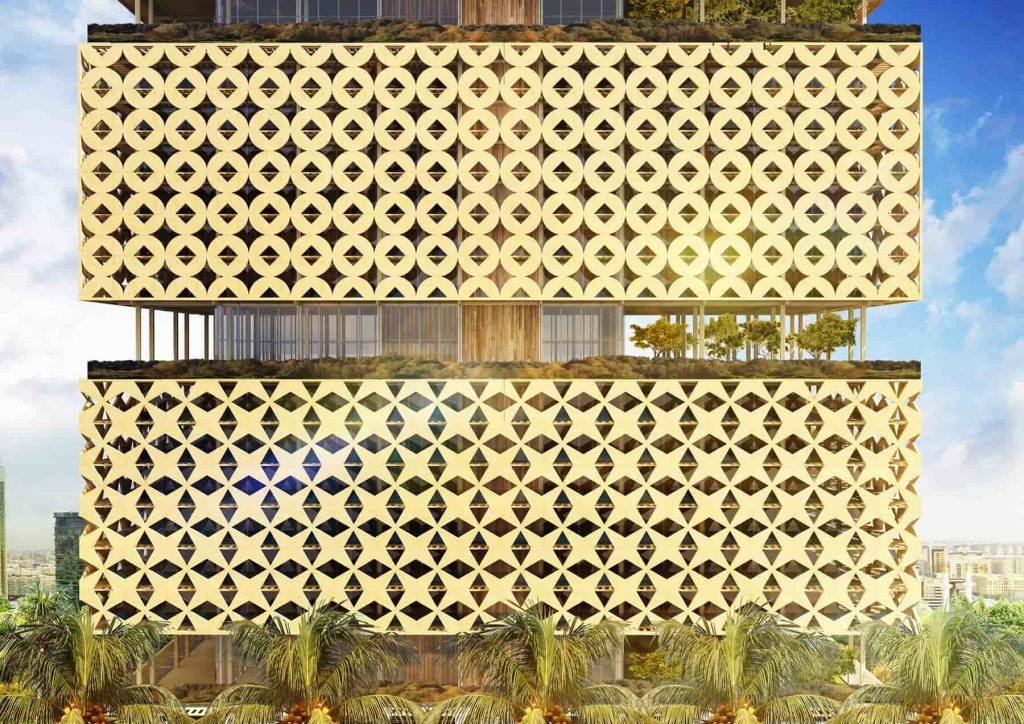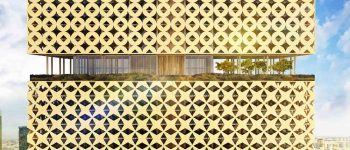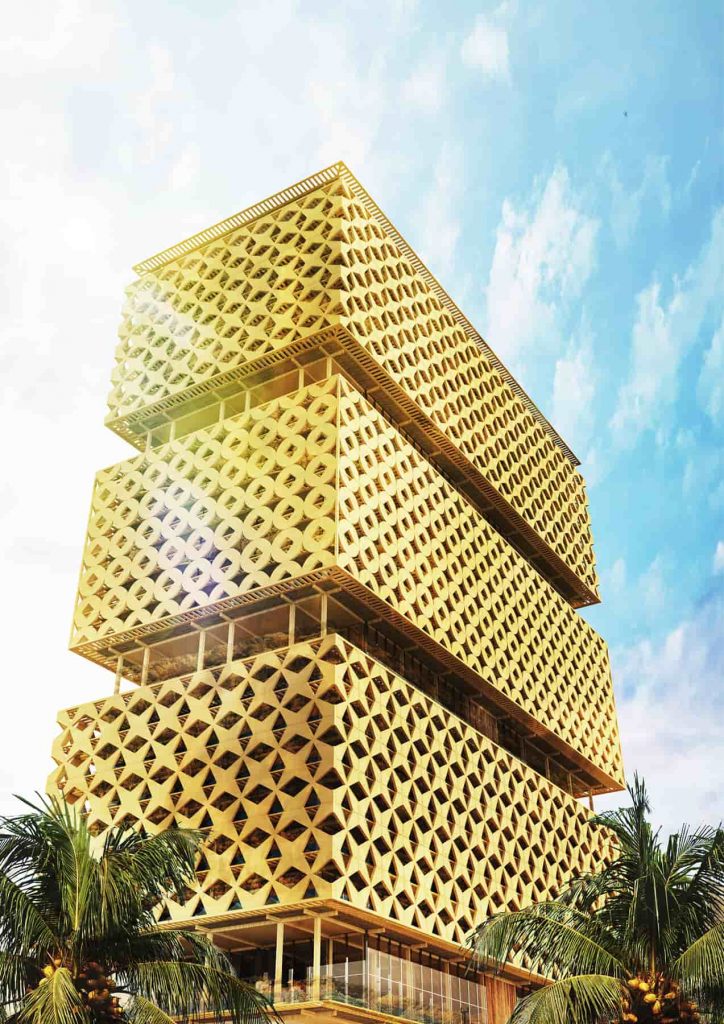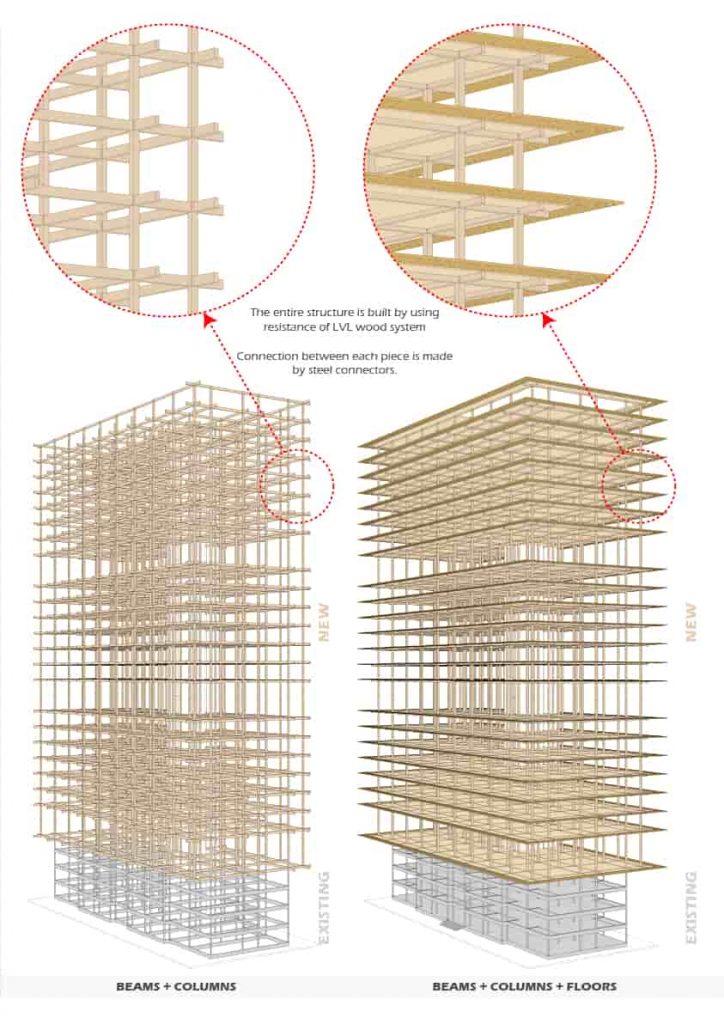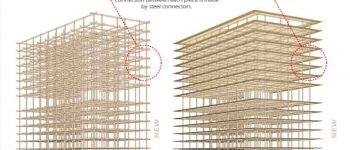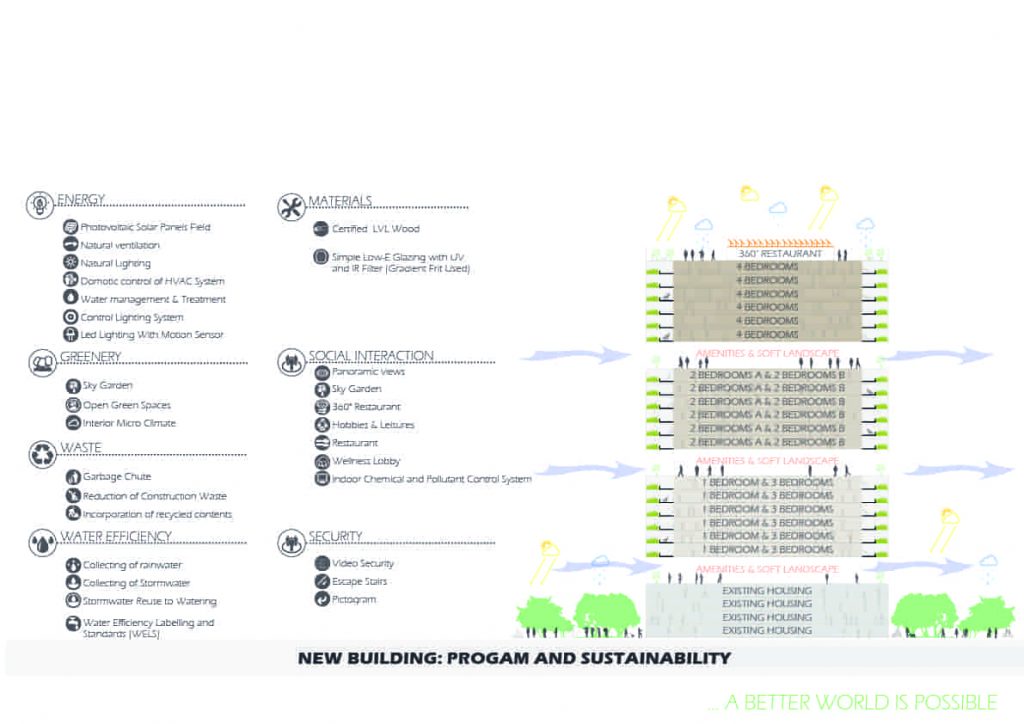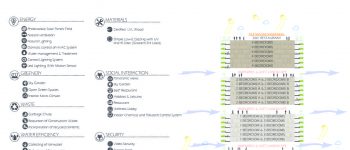Lagos is the most populate city in Africa and represents a big deal for architects. City consists of 16 million inhabitants. Situated in the heart of Ikory, the most popular and the richest residential site of Nigeria, Lagos’s tower is the unique wooden structure which is designed to be a smart and sustainable building. The old existing building is located on the highbrow Bourdillon Road with picturesque vegetation. It counts 4 blocks housing units. Each consists of 4 bedrooms and 3-bedroom apartments distributed on 4 floors. There are some amenities: Swimming Pools, Gymnasium, Tennis courts, Children’s Playground, Parking lots, Borehole and water treatment, Sewage treatment plants and electricity Generator.
Lagos’s tower rises above the town and follow the sky and search to cross the limit of wooden construction. The new landmark is composed of mixed residential type used; it is built on the roof of Abebe Court, a housing estate. The whole is oriented to maximize daylight and natural ventilation. The wooden envelope provides shading from the heat of the direct sun around the shape. Plants belt around each floor contribute to creating fresh air flow and keep a constant microclimate into living space while providing a visual comfort and aesthetic. The project focuses on the open area. This is an experimental tall wooden structure in Lagos. The apartments are designed around a central core. Building is divided in 4 parts. The existing structure and new are separated by sky gardens and amenities. The top roof consists of 360° restaurants and lush greenery. Sky gardens also contribute in social gathering between users. It gives a new natural footprint face to the historic Centre dominated by massive and heavy building built in ceramic, concrete and asphalt.
The envelope high lights Yoruba culture with their massive presence in the heart of Lagos. Inspiration comes from the history of Edo, Yoruba and Hausa people. Lagos is the oldest site of Benin Empire and it is awesome to see that there is always a traditional hierarchy in this modern city. Obe yet symbolizes the king of the man, the king of Lagos state. This tower is influenced by the contest ‘they don’t fuck it’, but it wants to be integrated into the city life. The entire structure is built by using resistance of LVL wood system. It is used as a load-bearing and a non-load bearing structure. Structural feasibility and sustainability are based on wood. LVL products allow crossing very far-reaching. Wood is known as the fingerprint of Nature into artificial buildings. Maybe will it connect us to nature? Its most powerful comes from the unicity of each piece of wood and it’s wonderful.
This experimental smart tall building is developed through natural, recyclable and local material. It can be a beautiful landmark for Ikory and in Nigeria. By consideration of the context and the local history, the design improved lifestyle and reveal all these points: Marketable, serviceable, economical, sustainable, environmental, Ecological and Social.
The Role of Timber
With this project, Architectural contribution is bringing a wood building tower and wood construction technic into a landscape dominated by concrete buildings. Nigeria benefits of the tropical rainforest from the central to the southern part of Nigeria. Lagos is in the south and belongs to the rainforest; why we cannot build in wood? Aside All, wood is not the only material, but it is efficient and appropriate for this region of the world. The nonsense is why do you have a potential of rainforest and you decide to don’t used it? The aim is to benefit of the power of wood in term of sustainability. In the tower, the entire structure is built by using resistance of LVL wood system. Wood will be used for load-bearing and non-load bearing structure. Structural feasibility is based on LVL products that will allow us to cross very far-reaching. Wood is Mother Nature’s fingerprints that make our buildings connect us to nature in the built environment. Architecture has sometimes a sense and sometimes none, not because it can be interpreted as a shit, no, but because it is a creative process. Sometimes we need to reinvent the world and that is what we decide to do in Lagos. Shortly, in this project, wood is not only important for its structural properties. Wood is important for its aesthetic, its cultural impact; importance, usability and influence in every day’s life routine. It is also a sensible, warm and soothing material. It can create an emotion into Lagos, it is also a powerful symbol. Can you imagine the first smart tall wooden building into an African city? Yes, this is also the sign of progress, technic and technological. Challenge. In the coming years, we will say, yes, we made it here. But we need to understand the project is yet as its experimental and study stage. At this step, we show you the process behind the skeleton and the project.
The second step was to understand cultural appearance in spite the status to be the most populate cities in Africa, Lagos contents very big and awesome cultural diversity. How to preserve this richest which can be sometimes bringing ethnic conflicts? Our idea was to interpret architecture as a monument to the city. Diversity is a strength not a weakness.
The final step was to focus on the development of wood construction technic into a landscape dominated by concrete. Lagos is in the south and belongs to the rainforest. Why we can’t build in wood? Is it because of technic difficulties? Cost? Or there’s none interest for wood buildings? Why confine cities with concrete and steel?
Client : Metsa Wood
Size : +40 000 sqm

